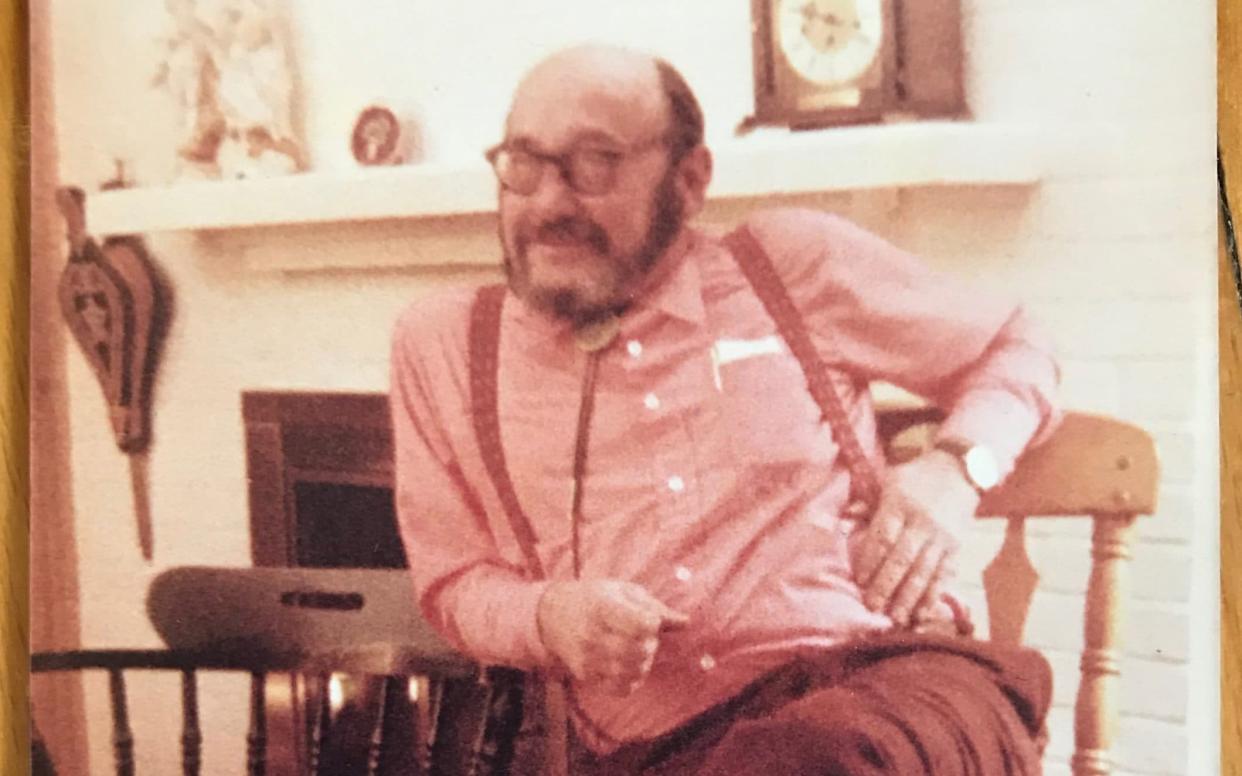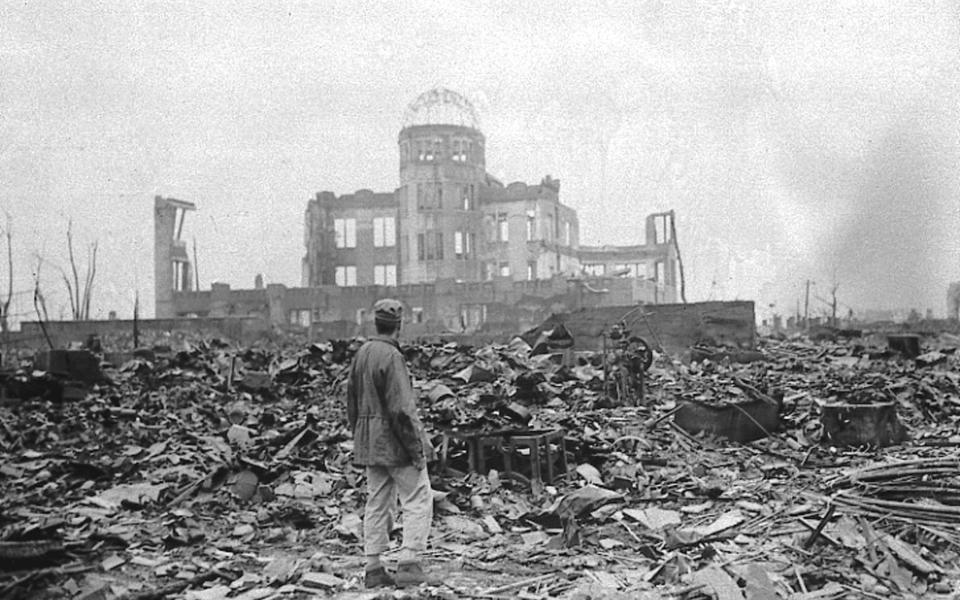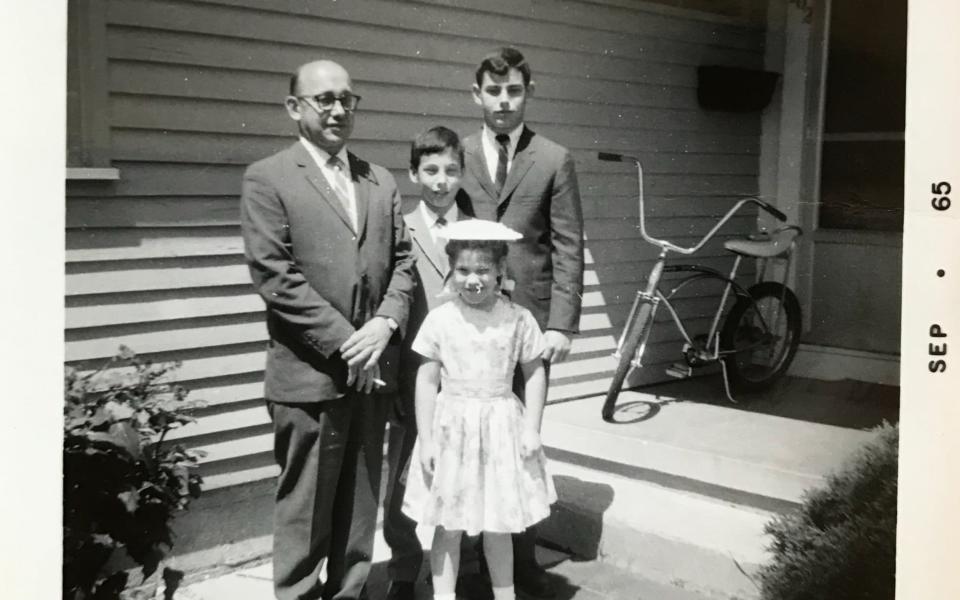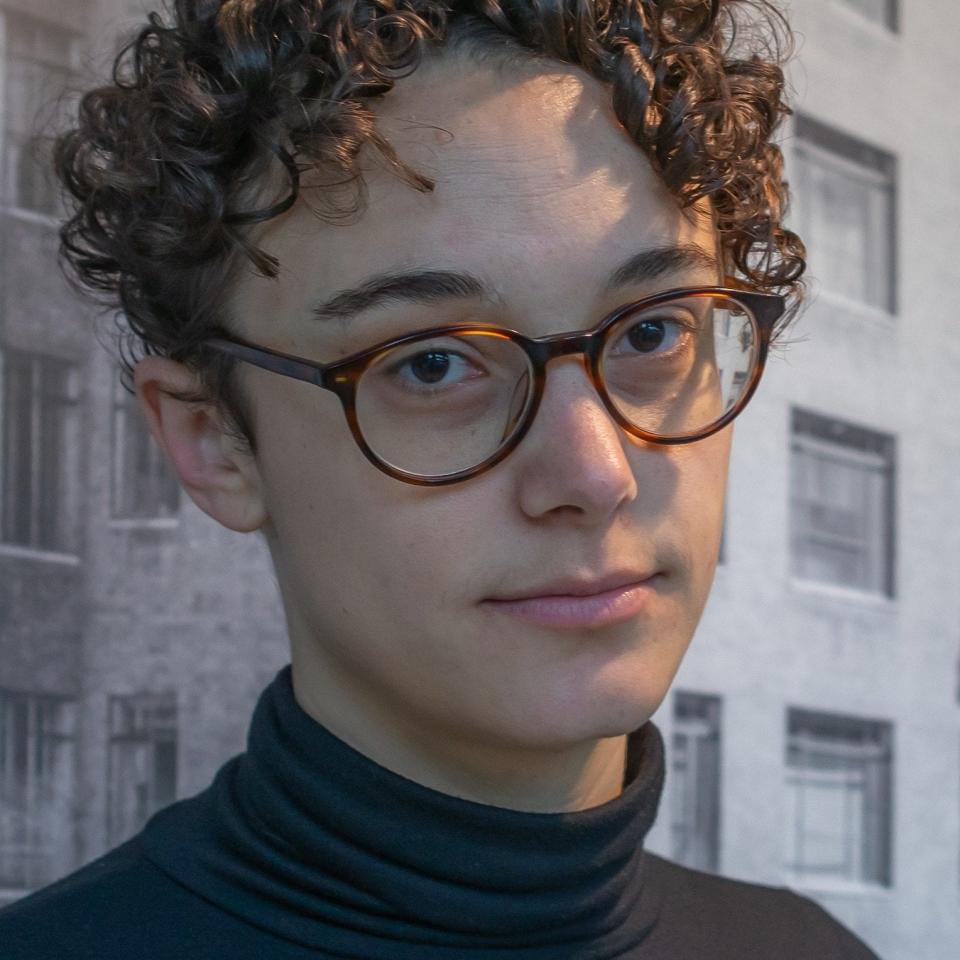My grandfather, the man who helped build the bomb that destroyed Hiroshima

On August 6, 2015, I knelt on the banks of the Motoyasu River in Hiroshima, Japan and floated a paper lantern on the dark water. Following the current, it joined the stream of thousands of others, decorated with hand-drawn peace signs, flowers, globes, and prayers for peace in many languages, flowing past the skeletal ruins of the iconic A-bomb Dome and under the Aioi Bridge, which had served as the target for the atomic bomb, 70 years before.
On the night of August 6, 1945, victims of the bombing gathered by that same river in numb shock and horror as their city burned around them. They took refuge in the water, hoping to soothe their wounds. Some people’s skin hung in strips or slipped off in sheets. The dead floated beside the living. Many of the injured cried out for water. Still, many survivors later remembered the eerie quiet of that night.
Before setting my lantern in the water, I slid a photograph of my grandfather into the corner where the wood met paper. It flickered ghost-like in front of the candle flame. I wanted him to bear witness to what I don’t think he had ever fully faced in his lifetime: that his work in a top secret laboratory in the southeastern United States had contributed to this atrocity.
Oak Ridge, Tennessee, codenamed Site X, was a secret city built by the Manhattan Project to house the production facilities and workers needed to enrich the uranium ultimately bound for the Hiroshima bomb. As a mid-level chemist, my grandfather, George Strasser, was likely not told the ultimate purpose of his work for security reasons. He died before I was born, so I could never ask him.
I vividly remember a photograph hanging in my grandmother’s house when I was a child, showing my grandfather standing in front of a mushroom cloud. At the time I didn’t understand what it meant, but it launched a lifelong interest in his involvement in the nuclear bomb. As I came to understand the significance of the photo, I was haunted to know that he played a part in the horror released in Hiroshima, taking an estimated 80,000 lives in the force of a single explosion, and hundreds of thousands in the days, weeks, months, and years after, as the radiation ran its course through the bodies of those who had been there that day.

My trip to Hiroshima was the culmination of years of grappling with this history, trying to understand my grandfather and the legacy of his work. Even after Hiroshima, he chose to continue a career in nuclear weapons production. His rapid climb was halted when his mental health began spiraling in the 1960s. He spent nearly a decade in and out of psychiatric hospitals, alcoholic and suicidal, and was finally medically retired, declared “totally and permanently disabled” by his psychiatrist. Part of my journey has been trying to understand how his work contributed to his unraveling.
I’ve spent several months of the pandemic quarantined on land outside Oak Ridge that was once my grandfather’s farm. As I watched spring, then summer, roll in on this beautiful land bought with nuclear weapons money, I thought about his contradictions – how he built bombs and planted trees, how he found his way off the farm and built a middle-class life for his family by making weapons of mass destruction.
As we approach Thursday’s 75th anniversary of the bombings of Hiroshima and Nagasaki, I’ve been revisiting the history of the bomb through the story of another man: Leo Szilard. A Hungarian physicist and Jewish refugee from Nazi Germany, Szilard was both responsible for the bomb’s existence and ultimately opposed to its use.
In a moment of terrible inspiration while crossing a London street in 1933, Szilard first conceived the idea of a nuclear chain reaction that could make an atomic bomb possible. Then, afraid of such a weapon in Nazi hands, he convinced Albert Einstein to write to President Roosevelt urging him to counter the Nazi threat by building an American bomb first. That programme became the Manhattan Project.
After Germany’s defeat, Szilard did everything he could to try to stop the bomb from being used, attempting to influence military leaders, and recruiting 155 Manhattan Project scientists to sign a petition urging President Truman to consider the grave moral implications and dangerous precedent of using the bomb. But it never reached the President.

I’d always thought of Szilard as a sort of tragic hero, whose good intentions to curb Nazi power unleashed a nightmare he couldn’t stop. Even afterwards, Szilard continued to fight to ensure that the weapon he’d dreamed into existence would not be the end of humanity, advocating for international arms control and nuclear truth-telling. He was a rare mix of genius, imagination, and conscience, a man willing to take responsibility for the consequences of his work.
In many ways, I wish grandfather had been more like him. In my research, I hoped to find a moment of protest or moral reckoning. But he was a man who accepted a culture of secrecy designed to quell conscience and dissent. He followed directives from above. He did his job.
And yet, there is one story that suggests he did, in the end, question the work he’d built his life on. My mother, an anti-nuclear activist, met my father’s father only once, with some friends who weren’t so concerned with gaining George’s approval. They peppered him with direct questions about the morality of nuclear weapons and he answered, without hesitation, that no nation, not even the US, should possess them: we should disarm, he said, even if we did so unilaterally. My mother was stunned. It was a radical position for the time, especially for someone from within the nuclear weapons industry. I’m relieved to know that my grandfather faced, at least for a moment, the moral implications of his work, but I’m disappointed, even angry, that he didn’t speak up sooner, and publicly.

His misgivings, instead, were turned inwards. In July 1983, the same summer that George met my mother, a congressional hearing was held in Oak Ridge to address the revelation that, decades earlier, the production of fuel for hydrogen bombs had leaked massive amounts of mercury into the local environment. My grandfather had overseen that process; one of his former psychiatrists told me he’d been tortured by guilt for his part in contaminating his home, the place he’d raised his children. George died of a heart attack six months after the hearing.
Seventy-five years ago, my country unleashed the bomb on the world. I don’t think we’ve ever fully reckoned with that legacy. Today, the United States has an estimated 3,800 nuclear weapons in its military stockpiles; the world has more than 13,000, according to the Federation of American Scientists.
The Doomsday Clock was designed by former Manhattan Project scientists to communicate the existential threat of nuclear weapons to the world. Every year since 1947, experts have met to determine how many minutes to “nuclear midnight” we are. Since 2006, they’ve included climate change in their considerations. At the beginning of this year, the Bulletin of Atomic Scientists’ Science and Security Board moved the minute-hand to 100 seconds to midnight, the closest it’s ever been to apocalypse, citing the weakening and ending of arms control treaties by global leaders, the increasingly dire threat of climate change, and the cyberwarfare that impedes the international response to these existential threats. Our very survival depends on how boldly we can change course.
The Bomb is available as a podcast on BBC Sounds and starts on the BBC World Service today at 7pm.

